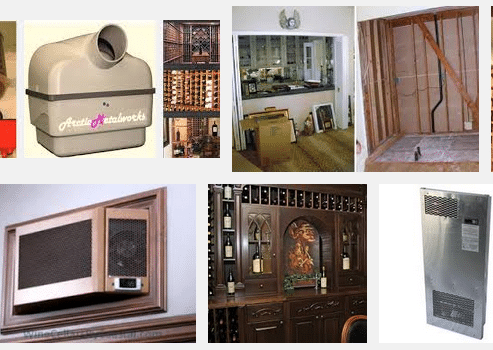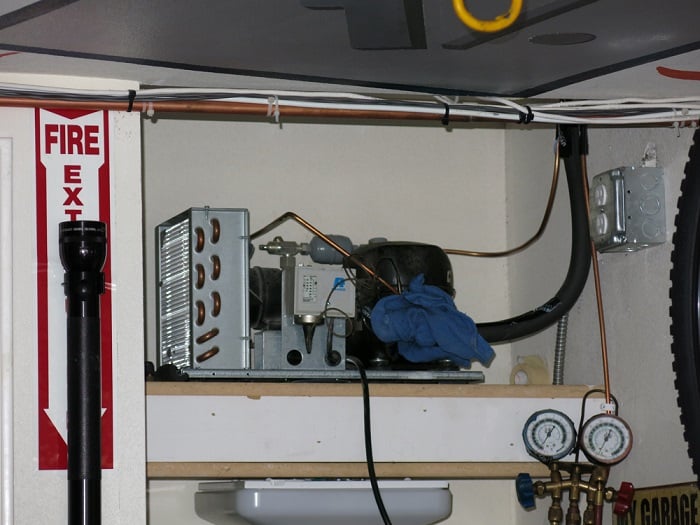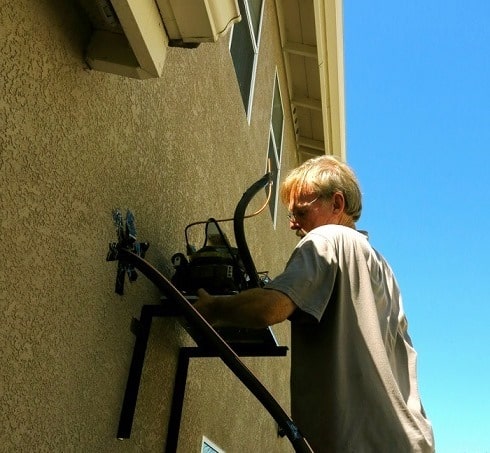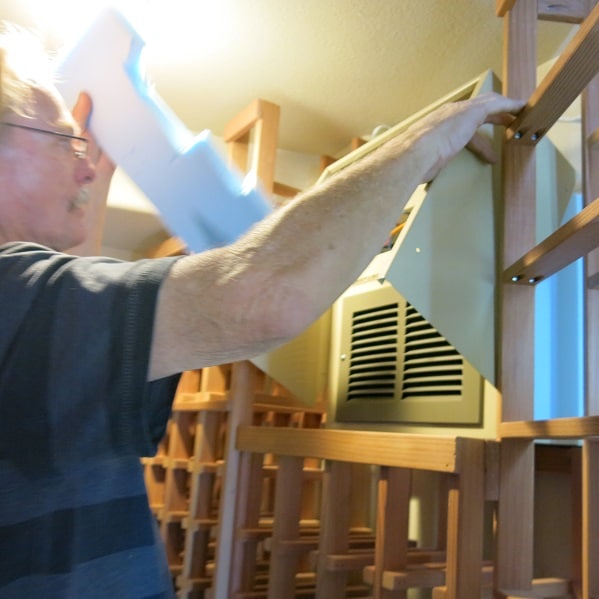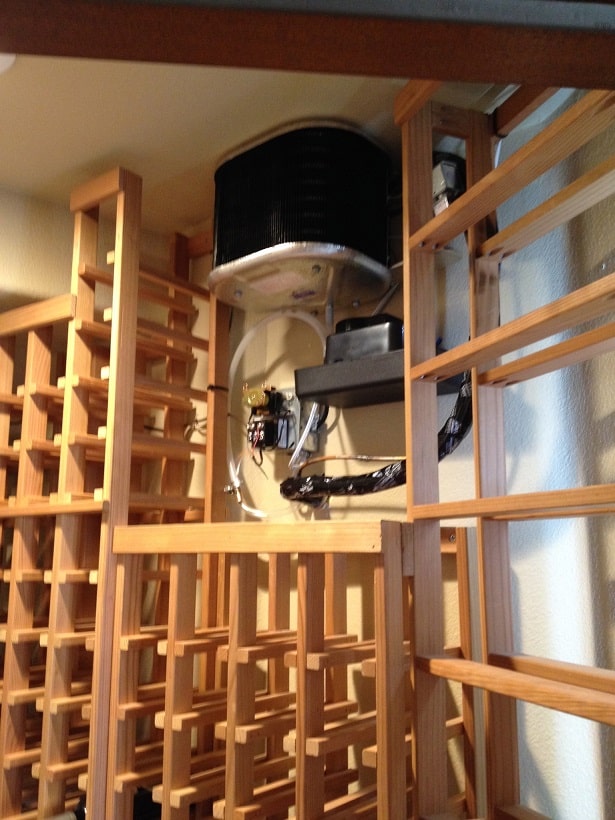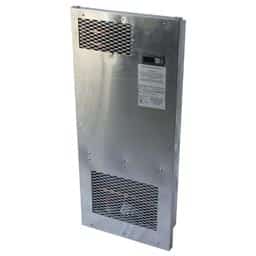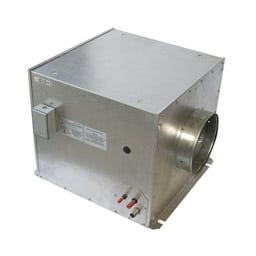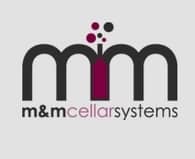
Looking for a wine cellar cooling specialist? M&M Cellar Systems has a team of licensed HVAC professionals that can offer quality installation, maintenance, and troubleshooting services for all kinds of wine cellar cooling equipment. Visit their website today!
Besides a properly built residential storage room, your wine collection also needs a cooling unit that is consistently providing the cellar with the right temperature and humidity for aging wines. There are many times when a problem with a refrigeration unit is not overt, and you won’t know what’s wrong until the whole system stops functioning. A leak, like the one in a recent case in Irvine, Orange County, is an example of a concealed problem. Regular unit maintenance is necessary to identify issues like this and solve them promptly.
Leaking HS 4600 Cooling Unit in Irvine, Orange County Repaired by M&M Cellar Systems
A wine cellar owner in Irvine, Orange County needed the help of a licensed HVAC technician. The client noticed that their wine cellar’s cooling unit was leaking Freon, and so they called M&M Cellar Systems for help.
The client’s cooling unit was an HS 4600 model manufactured by one of M&M Cellar’s dealers, US Cellar System. The HS Series of refrigeration systems are top quality cooling units, and are tested to function best in small wine cellars. Although the unit is robust and reliable, it will not continue to do so if it is leaking Freon. The client was fortunate to have discovered the leak early, and sought for help promptly. Ideally, wine storage owners should have an HVAC specialist perform regular maintenance checkups on their cooling unit, so that concealed problems such as refrigerant leaks are immediately identified and repaired.
A team of wine storage climate experts from M&M Cellar Systems went to the client’s residence to investigate the problem, and they found that the leak was located inside the refrigeration system.
Watch a YouTube video about this wine storage cooling unit repair project. Click below:
Wine Cellar Refrigeration Irvine Orange County Service Call – Refrigerant Leak Intro – Part One
An Optimally Functioning Cooling Unit is a Vital Element in Creating an Effective Storage Structure for Wines
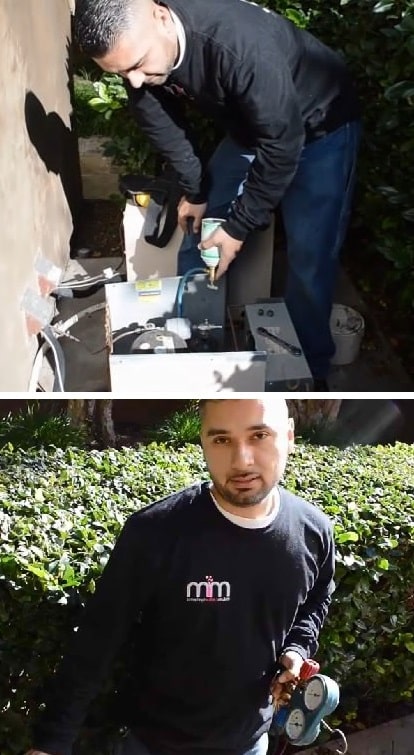
The Irvine wine storage refrigeration system was repaired by a team of HVAC professionals from M&M Cellar Systems. The cooling experts determined the leak’s location and sealed the hole effectively. For more information about M&M Cellar Systems, find them on Facebook! Click here!
Wine experts know how important it is to keep wines in the right climate conditions, so that they are safe from spoiling. A good wine collector will not only have a functional wine cellar built, but also make sure that an effective refrigeration unit is installed. A well-built cellar and a quality cooling unit are two of the basic elements of an effective wine storage system.
The Ideal Climate Conditions that Wines Need
Wine is a beverage that needs to be stored in the right conditions before it is enjoyed. Ideally, wines should be kept in cellar that is cooled to a temperature of approximately 55 degrees Fahrenheit with minimal to no fluctuations. Gradual, occasional fluctuations are not dangerous. What causes problems are rapid, constant fluctuations because these cause premature aging of wine.
Humidity is also an important factor in wine storage. The humidity inside a home wine cellar should be at approximately 70%. If the room becomes too humid, mold and mildew might form, which can contaminate your wines. On the other hand, if your wine cellar is too dry, corks can dry out and shrink, which can cause air to enter the bottles and ruin the flavor of your wines.
Have a Functional Residential Wine Cellar Constructed
A prudent wine collector will start his collection only when a cellar is ready. Wines need to be kept safe and allowed to age, and the ideal place for this is in a residential custom wine cellar.
The ideal wine cellar is one that has the complete elements of a functional wine storage room, such as a durable door, reliable vapor barriers and insulation, adequate lighting, proper flooring, and an efficient refrigeration unit.
A home cellar can provide wines the ideal climate conditions only if a quality wine storage cooling unit is mounted.
Why is a Regular Cellar Cooling Unit Maintenance Plan Important?
Protect your wines from sudden or constant fluctuations in temperature and humidity. You should make sure that your wine cellar cooling system is consistently functioning properly.
Problems with wine storage refrigeration units are not always noticeable. Some issues are concealed, like refrigerant leaks. If you are fortunate, like this client in Irvine, Orange County who discovered the leak in their equipment, you can have the problem fixed immediately. But this is not always the case. In order to be certain that your unit has no hidden problems, you should have it checked regularly. If an issue is discovered, you can have it repaired promptly.
The maintenance and repair of your wine cellar’s refrigeration system should only be performed by a wine storage climate expert. Only an HVAC professional is skilled at handling wine cellar cooling units. If an average air conditioning technician attempts to repair a cellar refrigeration unit, they usually cause more damage. Most of the time, the damages they incur will cost you more money to repair.
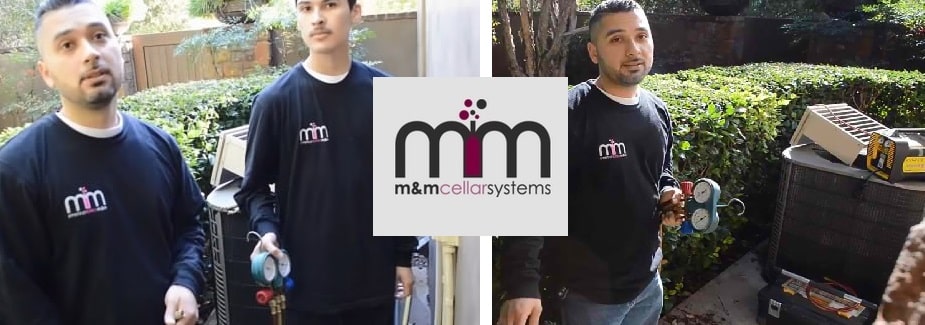
M&M Cellar Systems is a trustworthy wine cellar cooling systems manufacturer based in Orange County, California. They have a team of licensed HVAC professionals that can provide quality services for all kinds of wine storage cooling equipment. Find them on Google + by clicking here!
M&M Cellar Systems – Experts in Wine Cellar Cooling Equipment
M&M Cellar Systems specializes in providing residential wine cellar owners with various services for their refrigeration units. Their services include installation, maintenance, and repair of wine cellar cooling equipment. They have a team of licensed HVAC technicians who can provide professional services. You may call M&M Cellar Systems today to know more about their services. You may also send them an email for your inquiries. Find their contact details on their page!
A wine cellar is designed to provide the best climate conditions for aging and storing wines for an extended period of time. Most modern wine storage rooms are actively cooled, which means that they are equipped with climate control systems that help achieve and maintain the right balance of wine cellar temperature and humidity.
Wine cellar refrigeration units are engineered to keep the temperature level between 50°F and 55°F, and the relative humidity at 60%. Constant temperature fluctuations in a wine storage environment can lead to the premature aging of wines. Inconsistencies in humidity can dry out the corks, causing oxidation that can ruin the taste and flavor of wines.
To efficiently cool a wine storage space, the right type of wine cellar refrigeration must be installed, along with a proper support infrastructure, such as insulation, vapor barriers, and an exterior grade entry door. When using a split cooling system for wine cellar storage, it is important to locate the condensing part of the refrigeration equipment in a well-ventilated area.
Split wine cellar refrigeration units consist of two components: the evaporator unit and the condensing unit. As the noiseless half of the split system, the evaporator unit is usually installed inside the wine room. The condensing unit, on the other hand, is placed in a different location, preferably outdoors, where the refrigeration component receives fresh outside air for efficient cooling performance, while minimizing the effects of noise and vibration in a wine cellar.
Although the attic or garage space is also an excellent location option for condensing units, this area can heat up rapidly in the hot summer months. Exposing the refrigeration equipment to extremely high temperatures can reduce the efficiency of the unit, which can negatively impact the wine cellar temperature, and lead to the deterioration of the quality of wine collections.
This recently completed wine cellar refrigeration Aliso Viejo CA replacement project by Arctic Metalworks shows why cooling unit placement and location are key factors that can influence the overall performance of a climate control system.
The condensing component of the wine cellar refrigeration unit was originally located in the garage. When the Arctic team arrived for their initial inspection, the temperature inside the carport was well over 100°, with 90% humidity.
The homeowners complained of having a warm wine cellar temperature, and it was discovered that the cooling system was overheating due to high temperature levels in the garage.
Arctic Metalworks suggested moving the refrigeration equipment to the side yard, where the unit could get good air flow. The Arctic team reclaimed the entire refrigerant and removed the climate control system from its shelf the garage.
The condensing component of the wine cellar refrigeration Aliso Viejo CA was then moved to the yard and mounted on angle brackets, which were anchored to the walk.
In order to connect the outdoor condensing unit to the wine cellar storage evaporator unit, a new line set (consisting of copper piping and electrical wiring) was attached to the existing line set. The Arctic team also attached a rain cover over the cooling system, to shield the unit from harmful outside elements.
After recharging the unit with R134a refrigerant and conducting a systems test, the compressor was determined to be defective due to excessive heat exposure in the garage. The Arctic team returned a few days later and replaced the damaged condensing unit with a new 1/3 hp Arctic 0033 condenser. The Aliso Viejo CA wine cellar climate control system is now running smoothly, and the homeowners couldn’t be happier with the end result.
Arctic Metalworks is considered the guru of wine cellar refrigeration units in Southern California. They supply, manufacture, and install climate control systems, for both commercial and residential wine cellar storage. Their refrigeration products are backed by a team of refrigeration specialists that provide quality maintenance and repair service.
Aside from split wine cellar cooling systems, Arctic Metalworks also offers self-contained refrigeration units and ducted-split climate control systems. For wine collectors who are on a budget, a self-contained ‘through the wall’ unit is the ideal cooling solution. This cooling unit offers ease of installation, as it is simply mounted on the wall and vents through an adjoining well-ventilated room.
Ducted-split climate control systems provide the same benefits as the split wine cellar cooling systems. The only major difference is that it requires ducting to circulate air into a wine storage space. One of the advantages of using this type of cooling system is that it adds to the aesthetics of the wine cellar, thanks to the complete absence of mechanical equipment in the room.
Arctic Metalworks is the premiere manufacturer, supplier and installer of commercial grade wine cellar refrigeration units California. They are known as the refrigeration gurus of Southern California, not only for their high quality and reliable residential wine cellar refrigeration equipment, but also for the top notch service they provide their clients.
Established in 1962, this family owned and operated refrigeration company has taken on over a hundred projects involving wine cellar refrigeration installation, in residential and commercial applications. One of their recently completed projects involved replacing an existing cooling system in a California residential wine cellar.
When Arctic Metalworks first surveyed the location in the summer of 2013, the construction of a residential wine room under stairs conversion was well underway. The Arctic team offered to provide their services in wine cellar refrigeration units California, as well as that of Jerry Wilson from Coastal Custom Wine Cellars, for the wine racking systems.
However, the client had already decided to go with a much cheaper team, that installed modular storage and display solutions and a Breezaire wine cellar refrigeration unit. The quality of the modular wine rack system was okay for the amount paid, but the type of refrigeration equipment used was a different story altogether.
The original refrigeration specialist installed a residential wine cellar cooling system that did not have enough power to cool the California residential wine cellar. The brand new Breezaire refrigeration unit was icing up and leaking water as a result of running continuously to reach the ideal storage temperature of 55 degrees Fahrenheit. To make matters worse, Breezaire declared that the unit was installed improperly, thus voiding the warranty.
Arctic Metalworks ran diagnostics and confirmed that the existing wine cellar refrigeration system did not have the proper cooling capacity to create and maintain a conducive environment for storing and aging wines. The Arctic team removed the existing Breezaire cooling unit and replaced it with an Arctic 0025 ductless split system.
A ductless split system consists of an evaporator unit and a condensing unit, which are connected by a line set. Wine cellar refrigeration units California with a split feature not only promote whisper quiet operation, but also eliminate noise and heat exhaust. The condenser, which produces noise and heat, can be placed in a remote location (e.g. outdoors, or in the basement or garage), while the evaporator can be installed inside and/or near the wine room.
The condensing unit for this California residential wine cellar refrigeration installation project was located outdoors, to keep it well-ventilated at all times. It has a protective covering that shields it against harmful outside elements. Copper tubing and electrical wiring were used to connect the condenser to the evaporator, which is installed inside the wine room. Since the Arctic 0025 is a ductless split system, it requires no venting into an adjacent room.
Arctic Metalworks not only provides proactive maintenance of commercial and residential wine cellar refrigeration equipment, but also a warranty on parts and labor. The Arctic team has a 1% call back rate on all their wine cellar cooling systems, making their refrigeration products the most reliable on the market.
A beautifully made custom wine cellar in Orange County, California is the best resting place for your beloved wines. Since this is where you’ll be keeping your precious wine collection, it is important that you take into consideration each essential factor. A wine cellar has to be planned carefully before it is built. Here are the steps that you need to take when constructing a wine storage room:
1. Decide on How Many Bottles You Intend to Store
More important than having an available space for your wine cellar is how you can maximize it. It is important to consider how many bottles you plan to store in your wine storage room. Basically, you need to estimate how many wine bottles you consume every year. Then, calculate for the average age of the wines that you have now. Multiply these two values. For example, if you consume 300 bottles of wine in one year and the average age of the wines in your collection in 4 years old, then you intend to store 1200 wine bottles.
2. Plan Your Budget
It is a given that you need to spend a considerable amount of money when you have a custom wine cellar constructed. It won’t come cheap, but think of it as an investment because you will suffer greater loss if your wines are not stored properly. In order to come up with a reasonable budget for your wine cellar, you need to make a checklist of items needed in a wine cellar and identify which ones are most important to you and which ones you can forego.
3. Consider Carefully Where You Plan To Have The Wine Cellar Built
You can generally choose to have your residential wine cellar built anywhere in your house, but it is very important to consider first whether you want a passive wine cellar or a refrigerated one. Passive wine cellars utilize the temperature of the ground to manage the changes in temperature. These cellars make temperature changes not on a daily basis, but depending on what season it is. Thus, passive wine cellars need to be built in a subterranean basement. Refrigerated wine cellars, on the other hand, can be constructed anywhere in the house. All you need to think about is what wine cellar cooling system will be installed in it.
4. Prepare the Wine Storage Room Properly
There are many things that need to be done in order to prepare a custom wine cellar. You need to have a vapor barrier, a wine cellar refrigeration unit, a well-insulated wine cellar door and wine racks. Consult a wine cellar specialist to make sure that none of these are left out. These play a very important role in making sure that your cellar functions the way it should.
5. Design Your Residential Wine Cellar in Orange County
This is one of the most exciting parts of wine cellar construction. In this step, you will have to decide what type of wood you will use for your cellar, what type of racking will you have installed, what lighting you want inside and what paint color you want for your wine cellar room.
Wine cellar refrigeration systems are an essential part of wine storage. Here are a few basic things that you need to know about wine cellar cooling systems:
1. How Important is A Wine Cellar Cooling Unit?
Your residential wine cellar needs to have an efficient wine cellar cooling system installed. A regular, household air conditioning unit cannot provide the required conditions for wine preservation. Only wine cellar refrigeration units can provide the right temperature and humidity inside a custom wine cellar.
2. What are Wine Refrigerators For?
There are various kinds of wines and they need to be stored at differing, respective temperatures. Champagne and other types of bubbly wine need to be stored in a temperature of 43 to 47 degrees Fahrenheit. Red wines, generally, should be stored in 59 to 66 degrees Fahrenheit. Most white wines should be stored in 46 to 57 degrees Fahrenheit. Wine refrigerators are best for individual wine storage. Wine fridges installed inside your home wine cellar will allow you to chill these different types of wines at their appropriate storage temperatures.
3. How to Prepare a Wine Cellar Before Installing a Cooling Unit
The wine cellar refrigeration unit is the most important part of any custom wine cellar. It is important to understand that a wine cellar cooling unit should not be installed without first preparing the wine cellar properly. To ready a wine cellar for the installation of a cooling unit, make sure that the interior walls of the wine room are covered with at least R11 insulation. The outside of the walls should be covered with at least R19 insulation. The walls should also have a vapor barrier. Vapor barriers, also called moisture barriers, are made of polyethylene plastic sheeting. These are installed on the warm side of the cellar walls, to prevent condensation and mold formation.
The wine cellar flooring also needs to have vapor barriers. If your cellar floor is made of concrete, you need a vapor barrier with concrete sealant. All kinds of wine cellar flooring need a vapor barrier and R19 insulation.
The Different Kinds of Wine Cellar Refrigeration Units
a. Through the Wall Wine Cellar Cooling Unit – This is the type of cooling unit that is simply mounted on the cellar wall. The exhaust of this cooling system is released into an adjacent room. It is recommended that this adjacent room is air conditioned, so that the exhausted heat may be dissipated.
b. Ductless Split Cellar Cooling System – This cooling system is similar to the through-the-wall unit; the difference is that its evaporator coil remains in the room with a split cooling unit, while its condenser is in another room or outside the house. This type of cooling unit needs a drain for its excess condensation.
c. Ducted Wine Cellar Refrigeration Unit – You can opt to mount this kind of cooling system on your cellar wall or have it fully ducted into and out from the custom wine cellar and an adjacent room.
Storing wine is no easy task. The conditions required to store wine are very specific. The temperature cannot be not too warm, but also not too cold. The humidity of the wine storage room should be not too dry, but also not too wet. The good news for wine enthusiasts is that technology has made equipment available to us that can provide the right conditions for proper wine storage. Wine cellar cooling units are the key to allowing your wines to age tastefully as they are stored in a custom wine cellar in Los Angeles.
Learn more about wine storage by becoming knowledgeable on these wine cellar cooling unit facts:
FACT 1: BALANCED HUMIDITY
The ideal humidity for the proper storing of wines is between 60 to 70 percent. If the wine cellar room gets more humid than this, the wine bottle labels can get ruined by mold formation. If the humidity in the custom wine cellar goes below this range, the corks may dry out, and air will then seep into the bottle and ruin the wine.
One tip to keep in mind if you need to increase the relative humidity (RH) inside your residential wine cellar is to increase the FON setting on the control panel of your wine cellar cooling unit. CellarPro wine cellar cooling units have this option. You may also increase the fan speed on the cooling unit if your model has that option.
FACT 2: AVOID CONDENSATION
Ideally, your custom wine cellars in Los Angeles, CA should be built with an airtight seal. In order to achieve this, good insulation has to be installed, along with a moisture barrier. Without these, your wine cellar refrigeration system will create a ton of condensation.
One way you can minimize the amount of condensation on your evaporator coils is by increasing the FON setting of your wine cellar cooling unit. CellarPro units have this option. Condensation can also be reduced by increasing the fan speed of your cellar cooling unit. Selected CellarPro models have this option.
FACT 3: STORING TEMPERATURE VS. SERVING TEMPERATURE
The best serving temperature for wine is different than its storing temperature. Ideally, wine should be stored in a residential wine cellar in CA that has a temperature within 55 to 60 degrees Fahrenheit. Serving temperature, on the other hand, varies from one wine to another. Champagnes and other types of bubbly wines are best served at a temperature that is within 40 to 44 degrees Fahrenheit. White wines should be served at 45-49 degrees Fahrenheit. Red wines should be served at 50-55 degrees Fahrenheit.
You may lower the temperature of your wine cellar cooling unit to achieve serving temperatures by lowering the minimum setpoint. In a CellarPro wine cellar refrigeration unit, you first change the LS and ALL parameters on the control panel. There are step by step instructions on how to do this; contact CellarPro Cooling Systems to obtain them.
FACT 4: QUALITY WINE CELLAR COOLING UNIT
Through-the-wall wine cellar cooling systems like the CellarPro 1800 Series are the best kind of wine cellar cooling units. They are self-enclosed, fully charged and easy to install.
US Cellar Systems has various options of wine cellar refrigeration units for you to choose from. The best way to identify what cooling unit is best for your home wine cellar in Los Angeles is to have a professional calculate the heat load inside the storage room.
Wines improve most when stored under the ideal environmental conditions. The best wine cellar environment for storing and aging wines long-term is one with a temperature range between 55 to 57 degrees Fahrenheit and humidity levels regulated within 50 to 70 percent. Investing in a wine cellar air conditioning system will help preserve the texture and flavor of wines.
A climate control system is an important component of a wine cellar, because it protects wines against harmful environmental factors (such as temperature and humidity fluctuations). Wine cellar refrigeration units are engineered to provide optimal climate conditions, wherein wines can age to perfection. However, the proper cooling system for a wine cellar must have reliable cooling features and safety standards.
Wine Cellar Refrigeration Units – Various Models
- Self-Contained Wine Cellar Refrigeration Units
Different models of wine cellar refrigeration units are available to accommodate various applications and design preferences. Self-contained, through the wall units are ideal for wine rooms with small storage capacities. These cooling systems do not take up floor space as they are simply mounted on the wall.
- Wall-Mounted Wine Cellar Refrigeration Units
Of all wine cellar climate control systems, through the wall units are the most affordable and the easiest to install. However, wall mounted wine cellar refrigeration units can generate a lot of noise because they house both the evaporator and condenser, which is the noisiest part of the cooling system.
- Split Wine Cellar Refrigeration Units
For wine collectors who prefer a quiet environment, a split wine cooling system is designed to provide a noise-free wine cellar space. A split wine cellar air conditioning system divides the evaporator and condenser into two separate units.
This split feature allows for remote installation of the condenser. It can be placed in a remote location such as the attic or basement. The condenser can also be installed outdoors, provided the unit is outfitted with a low ambient kit, to protect the equipment from a moderate to extreme cold environment.
- Ducted Wine Cellar Refrigeration Units
Another alternative is a ducted climate control system, that makes use of ducting kits to introduce cold air into and exhaust warm air away from a wine cellar. One of the benefits of this cooling unit is the complete absence of physical equipment in the room, contributing to the aesthetic quality of the wine cellar. It also allows the wine collector to maximize storage space.
Maintenance for Wine Cellar Air Conditioning or Refrigeration Units
Much like any other equipment, cooling systems in refrigerated wine cellars will most likely break or wear out over time. It is important for wine collectors to check on their cooling equipment on a regular basis to ensure that it is in excellent working condition. One does not need to be an HVAC expert to determine if there is something wrong with their refrigeration unit.
Some telltale signs that can indicate it’s time to replace a wine cellar air conditioning system are a broken door gasket and unusual noises. A broken door gasket can provide an erroneous temperature measurement, which can lead to premature aging of wines. Every distinct and unusual sound given off by wine cooling equipment can point to a certain problem.
For instance, a hissing sound can indicate leakage of refrigerant, while a high pitched noise can signify a worn out fan belt. Conducting regular check-ups of a wine cellar cooling system is one way to make sure that it is functioning accordingly, and thus maintaining the ideal climate conditions for aging wines.
Visit our blog page now to learn more about wine cellar cooling.
Wine lovers and wine collectors alike know how important it is to store wine in the right conditions, which preserves its quality. The basic necessities for proper wine storage include a well-built custom wine cellar in Orange County, CA and the right wine cellar cooling system. Without these two things, it is very difficult to make sure that wine ages tastefully.
When it comes to wine storage, there are a few common problems that must be solved in order to keep wines at their best. Here are a few of the most common issues concerning wine storage:
1. Exposure to Light
Wine should not be exposed to ultraviolet (UV) light. UV light damages wine by destroying the organic compounds in it. Consequently, the flavor of the wine is ruined. Wines should be kept in a room that is dark and far away from any UV light source. This is also the rationale behind dark colored wine bottles.
To protect your wines from UV light, you should first make sure that your custom wine cellar is located away from sunlight and also avoid the use of fluorescent lights inside the wine storage room. Some people keep their wines openly in the kitchen. This is a bad idea, because kitchens usually have fluorescent lights all around.
2. Too Much or Too Little Humidity
Both the increase and the decrease in the level of humidity is detrimental to the quality of your wines. The humidity inside a custom wine cellar in California should be kept within 60% to 70%. When the wine storage room becomes too humid, wine labels can be damaged, and mold and mildew can also form. Consequently, your wines can get contaminated. On the other hand, if the humidity drops, the wine corks can shrink and cause air to get inside the wine bottle, ruining the wine.
This is the reason most wine bottles these days no longer use the traditional cork seal, but instead have used synthetic corks and screw tops. The traditional cork seals are found to be ineffective in keeping wine bottles closed and protecting wine.
To keep the quality of your wines, the wine corks should be kept moist. The simple solution is to keep the wine bottles lying sideways on the custom wine racks. This position not only saves space, but also makes sure that the corks are moist and will not shrink. A good wine cellar refrigeration unit is also needed so that the humidity in the wine storage room is kept at the ideal range, with minimal to no fluctuations.
3. Fluctuating Temperature
The most important variable in storing wines is temperature. Although sources vary on the exact temperature to store wines, most agree that it is somewhere between 55 to 60 degrees Fahrenheit. Also, there should be no fluctuations in the temperature level. Keeping the temperature from fluctuating is a common problem. Primarily because of changing weather, keeping the temperature in the ideal range requires extra effort.
Of course, a quality wine cellar refrigeration system is the best solution to this. If you do not have a wine cellar with a cooling unit, then consider getting a wine fridge. Wine fridges or wine chillers are not cheap either, but they make a good, less expensive alternative. Not only will a wine fridge manage temperature, it will also control the humidity, and protect your wines from ultraviolet light.

